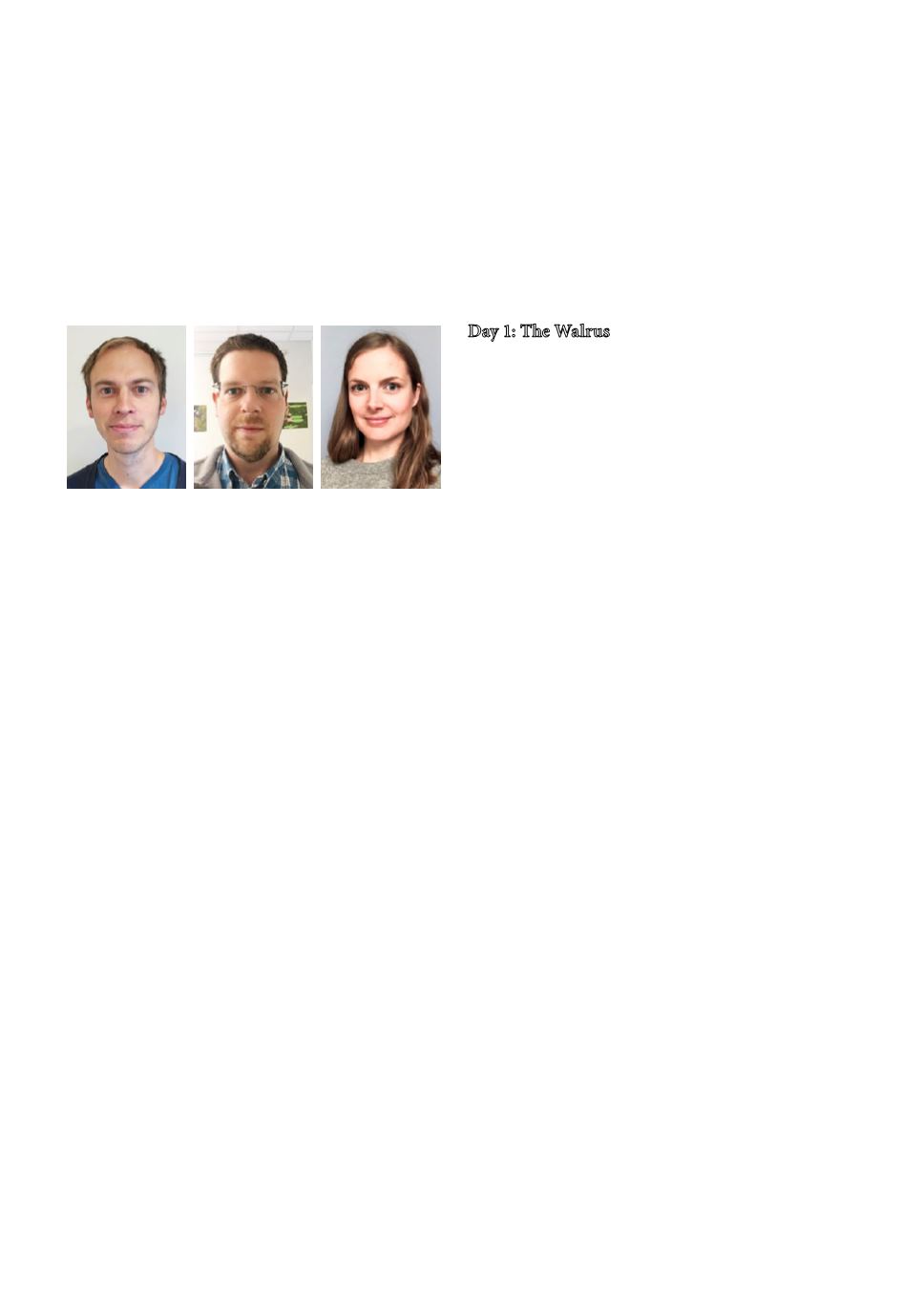
12 |
Klinisk Biokemi i Norden · 4 2019
Logbook from a sail in Öresund
Joel Svensson
1
, Gergely Talaber
2
, Sara Linder Ekö
3
1
Department of Clinical Chemistry and Pharmacology, Region Skåne
2
Unilabs AB, Department of Clinical Chemistry, Skaraborgs Hospital, Skövde
3
Department of Clinical Chemistry and Pharmacology, Uppsala University Hospital
At the end of August, a group of clinical biochem-
ists boarded the sailing ship T/S Helene in the port
of Malmö. There were eleven participants and five
course leaders from most of the Nordic countries
and Hungary, with the common aim of developing
within practical communication and leadership in
laboratory medicine. The course was organized by
Per Simonsson and endorsed by the NFKK, and as
earlier courses on board Helene had received many
positive ratings, our expectations were high. The
destinations were different ports on the other side of
Öresund, in turn Dragør, Køge, and finally the pier
outside Skuespilhuset in central Copenhagen. The
more than 100 year old vessel was formerly used as
a cargo and training ship, and now served as both
accommodation, auditorium and dining facility
during our three days on the water. It was operated
by Captain Gunnar Carlberg together with his very
experienced and skilled Scanian crew, who readily
shared their seaman’s stories with us. In this uncon-
ventional course environment, we participated in
various workshops, role-plays and lectures concern-
ing communication and marketing, complemented by
more informal discussions and meetings. As a break,
we occasionally had to assist with the commanding
of the ship, hoisting the heavy booms and sails and
steering. An additional factor that made the voyage
even more pleasant was the late summer weather,
which offered swimming opportunities during the
disembarkations and warm evenings with food, music
and good company in the open air.
Day 1: The Walrus
Before heading on board, we were given some home-
work. In addition to immersing ourselves in literature
on the subject, we were asked to prepare business
cards and a case description exemplifying a commu-
nication between ourselves and clinical colleagues,
either effective or unsuccessful. We were also given
some keywords to reflect upon, which later showed
up on our badges during the introductory session.
Per Simonsson (Sweden) led this session, in which
the participants introduced themselves and then had
to discuss the keyword noted on their badge, in rela-
tion to the communication and marketing process.
After discussing some more obvious key elements of
communication, for instance that you as a clinical
biochemist should know your market and that you
should pick the relevant person on the clinical side to
talk to each time, we came to the keyword “walrus”
(referring to an individual with a walrus like beard,
the American professional golf player Craig Stadler).
Importantly, every “walrus” has a strong influence
within a particular group, and if you cannot convince
the “walrus” then you are not going to be able to make
any change, because he or she is often the unofficial
leader and the first hurdle to overcome (for more
details we recommend reading Per Simonsson´s
The
Cellavision story
). Therefore, it is important to first
identify and take care of the “walrus”, otherwise you
end up nowhere.
After an excellent dinner prepared by the ship´s
own cook Birte, business cards were exchanged and
it was time to present case descriptions. Changing
method or platform is apparently a process in which
communication between clinicians and the lab often
fail, as several course participants mentioned this
as poor examples. It is especially problematic when
values are no longer comparable, as often seen when
changing immunochemical methods. On the other
hand, an example of efficient communication was


